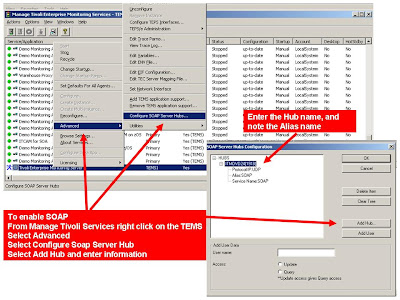I've made my first foray into the world of Youtube. I created a video that discusses and then shows an interactive example of how you can build an integrated management and monitoring Dashboard using OMEGAMON and the Tivoli Enterprise Portal. What I did was I created an example that shows how you can pull together information from multiple monitoring agents (z/OS, CICS, DB2), and place that information on a single display.
I have plans to create other relevant videos as we go along. I think that videos can be a great way to show customization and usage scenarios.
I've added an area for links on the right for my videos. There is also a link to the Dashboard video below:
http://www.youtube.com/watch?v=Vs6Yhv1p4zg
I have plans to create other relevant videos as we go along. I think that videos can be a great way to show customization and usage scenarios.
I've added an area for links on the right for my videos. There is also a link to the Dashboard video below:
http://www.youtube.com/watch?v=Vs6Yhv1p4zg







